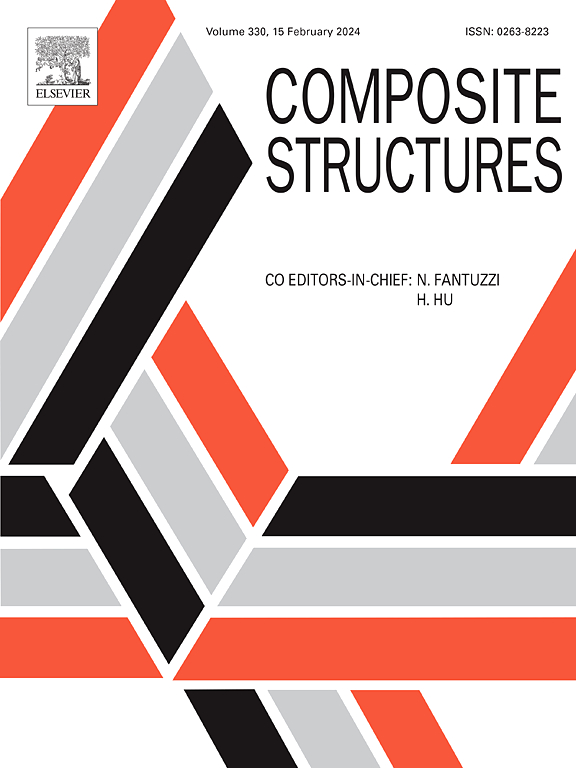Interphase model for computational homogenization of short fibers reinforced composites with imperfect interfaces
IF 7.1
2区 材料科学
Q1 MATERIALS SCIENCE, COMPOSITES
引用次数: 0
Abstract
This paper predicts the effective elastic properties of short fiber reinforced composites with imperfect interfaces by the Finite Element (FE) homogenization method. The imperfect interfaces between the fibers and matrix are modeled as thin interphases. A Representative Volume Element (RVE) consisting of the fibers, matrix and interphases, is constructed by the modified Random Sequential Absorption (RSA) algorithm. The simulation results validate that the interphase model combined with the FE homogenization approach, can reliably assess the effective elastic properties of short fiber reinforced composites with imperfect interfaces. Meanwhile, the interphase model can accurately approximate the Linear Spring Model (LSM) and Interface Stress Model (ISM), respectively, in a specific range of the elastic modulus ratio. The influence of the interphase Poisson’s ratio on the overall elastic properties of composites is neglectable. Furthermore, the influence of the interphase elastic modulus and shear modulus on the effective elastic properties of composites becomes more pronounced as the interphase thickens from 50 nm to 500 nm. This paper provides a straightforward and practical method for predicting the effective elastic properties of short fiber reinforced composites with imperfect interfaces.
非完美界面短纤维增强复合材料计算均匀化的界面相模型
本文采用有限元均匀化方法对具有非完美界面的短纤维增强复合材料的有效弹性性能进行了预测。纤维与基体之间的不完美界面被建模为薄界面。采用改进的随机顺序吸收(RSA)算法,构造了由光纤、矩阵和界面组成的代表体积元(RVE)。仿真结果表明,结合有限元均匀化方法的界面相模型能够可靠地评估界面不完善的短纤维增强复合材料的有效弹性性能。同时,在一定的弹性模量比范围内,界面模型可以准确地近似线性弹簧模型(LSM)和界面应力模型(ISM)。相间泊松比对复合材料整体弹性性能的影响可以忽略不计。从50 nm到500 nm,随着界面厚度的增加,界面弹性模量和剪切模量对复合材料有效弹性性能的影响更加明显。本文提供了一种简单实用的方法来预测具有非完美界面的短纤维增强复合材料的有效弹性性能。
本文章由计算机程序翻译,如有差异,请以英文原文为准。
求助全文
约1分钟内获得全文
求助全文
来源期刊

Composite Structures
工程技术-材料科学:复合
CiteScore
12.00
自引率
12.70%
发文量
1246
审稿时长
78 days
期刊介绍:
The past few decades have seen outstanding advances in the use of composite materials in structural applications. There can be little doubt that, within engineering circles, composites have revolutionised traditional design concepts and made possible an unparalleled range of new and exciting possibilities as viable materials for construction. Composite Structures, an International Journal, disseminates knowledge between users, manufacturers, designers and researchers involved in structures or structural components manufactured using composite materials.
The journal publishes papers which contribute to knowledge in the use of composite materials in engineering structures. Papers deal with design, research and development studies, experimental investigations, theoretical analysis and fabrication techniques relevant to the application of composites in load-bearing components for assemblies, ranging from individual components such as plates and shells to complete composite structures.
 求助内容:
求助内容: 应助结果提醒方式:
应助结果提醒方式:


